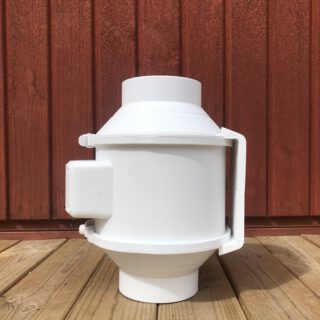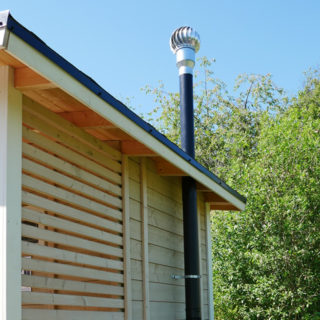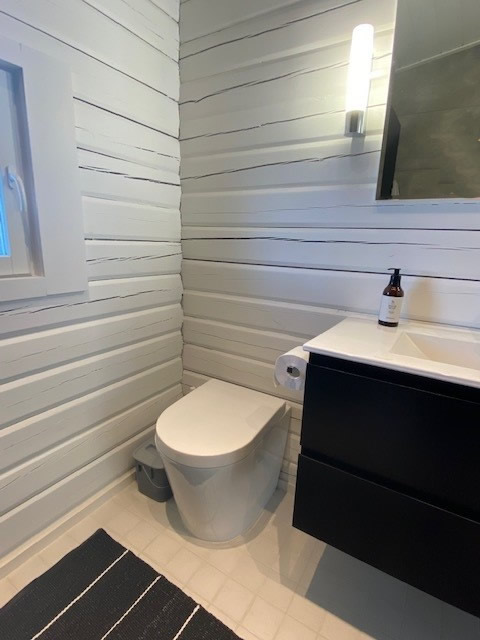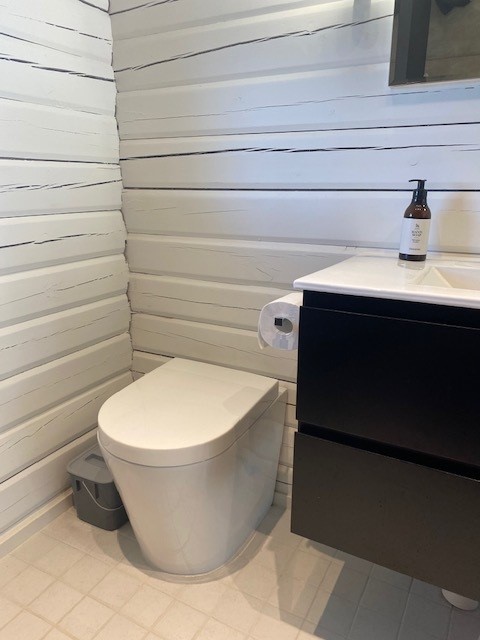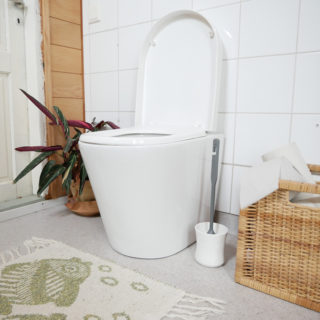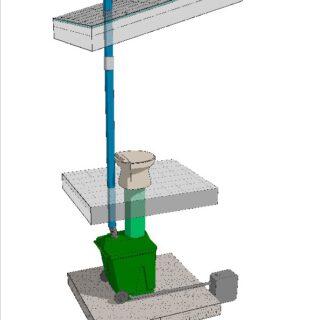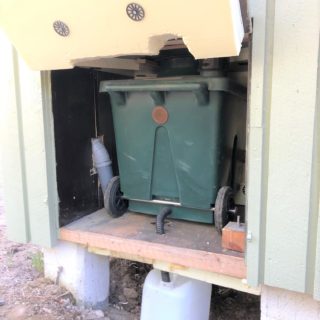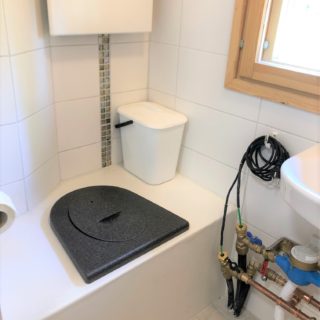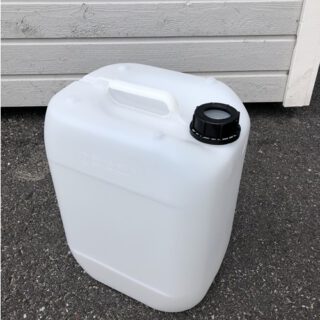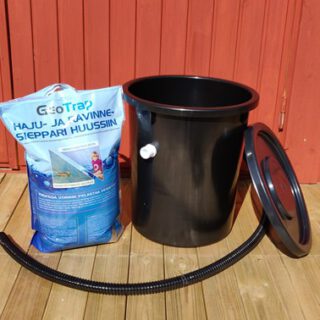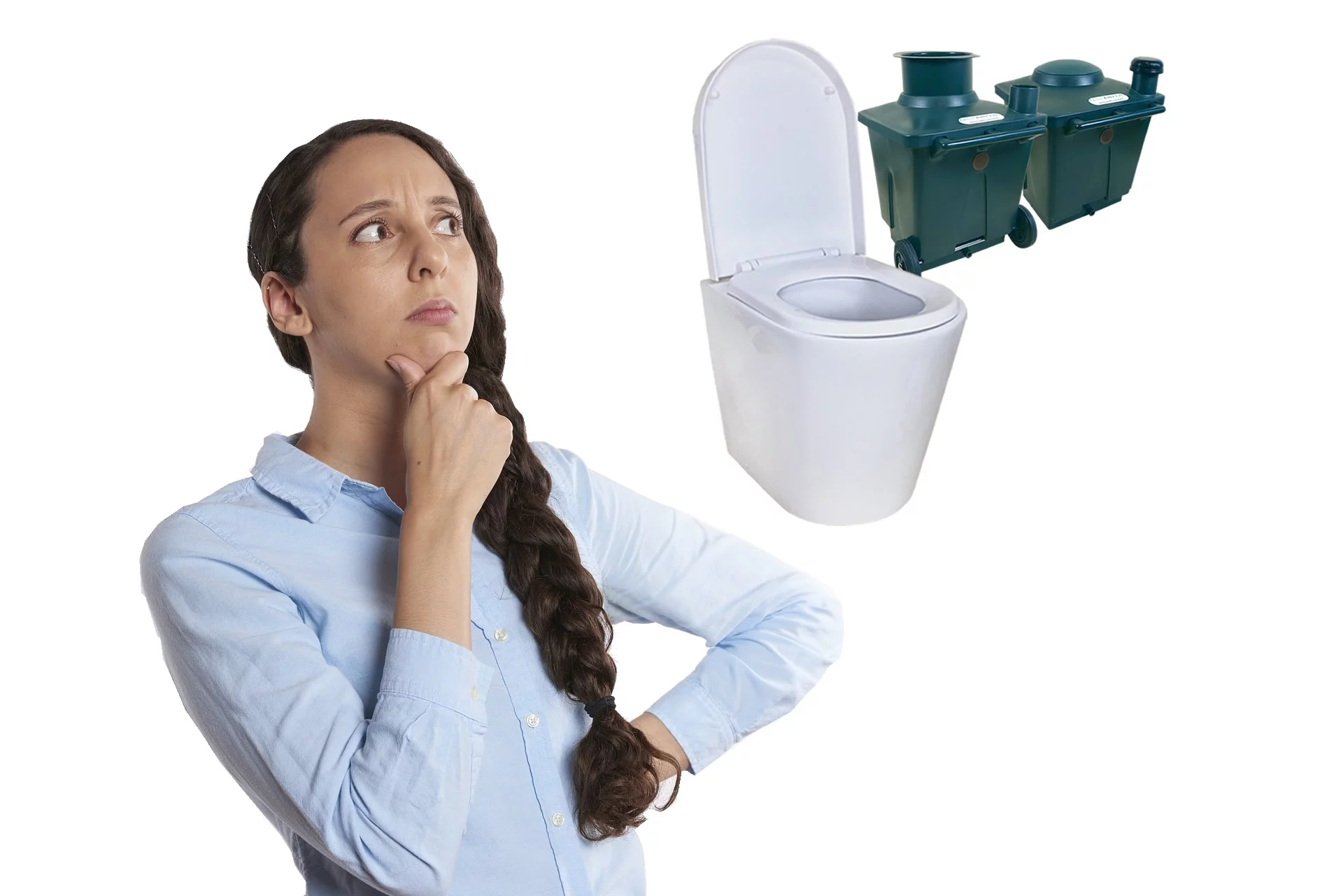
Composting dry toilet indoors, pros and cons?
“Can you really have a composting toilet indoors?“
– A question we hear people wondering on a weekly basis. More often than not, the answer is “YES – you can and even should“. Composting toilets have lots of advantages that other toilet models do not. Nonetheless, when speaking on the phone, we can hear how most of the people are afraid of odor problems and other technical issues. Here at Pikkuvihreä, we fully understand the mistrust as there has been many poor dry toilet options in the market and choosing the right product & use-case -fit requires careful consideration and planning. We encourage everyone to consult an expert like us first before making any dry toilet purchase decisions. In this blog article we balance the pros and cons of having a composting dry toilet indoors.
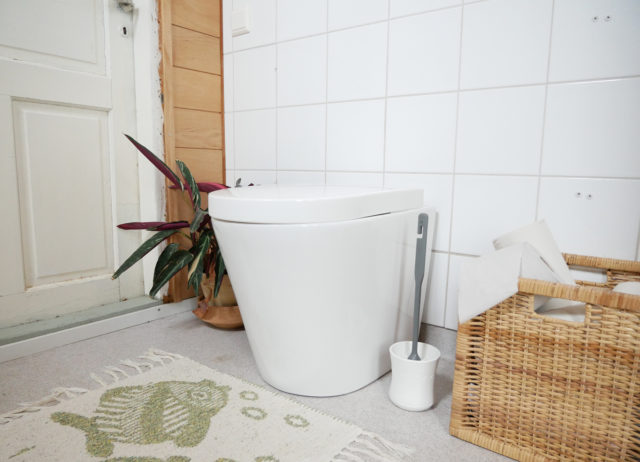
Advantages of a composting toilet in indoor use
Odorless operation guaranteed
When making a dry toilet to indoors, it must be completely odorless. Preferably, the dry toilet should smell less than a flush toilet, since that is the standard. Fortunately, most of the composting dry toilets have nowadays a great potential to be odorless. This is because most composting toilets separate liquid waste from solid waste, hence giving a fertile ground for odorless composting process. Back in the old days when liquids and solid waste were not separated, the result was all too often a large bucket full of rotting, not composting, sludge. Thanks to separation, the composting process can begin immediately and continue until all the waste has been turned into reusable soil.
In order to guarantee a 100 % odorless toilet in indoors at all times, we recommend equipping the toilet with an quality electric duct fan. As the duct fan is constantly flowing air out from the already almost odorless compost, there is not even a theoretical chance that any odors could push indoors. Efficient ventilation also insures that the air flows in the right direction and the compost stays dry enough. This way the toilet works great even if the number of users increases temporarily due to e.g. guests. If there is no electricity available, there are good alternatives available, such as a solar and wind powered fans.
When the electric duct fan is used, one can make bends to ventilation piping and even let outflow go horizontally. This often makes the installation easier and better looking. If no electricity is available, we recommend to lead the ventilation piping as vertically as possible without any bends.
With compost toilets, the absence of odors is not only limited to indoors, but continues also outdoors. Since the urine-separated compost mass does not smell itself almost at all, there will be no odor problems caused outdoors for example to neighbors. This is one of the things where compost toilets differ from e.g. incinerating toilets that burn toilet waste and push resulting odors out where they can flow to nearby areas.
Reliable operation
The second significant advantage of composting toilets is definitely the reliable operation in all conditions. Whether there is a power breakout or a temporary increase in the number toilet users, a composting dry toilet will not let you down. In general, a composting toilet like the Green Toilet is very difficult to break as there are no moving or fragile parts. Thus, we for example are happy to give a 10-year guarantee for each Green Toilet sold. When it comes to indoor dry toilets, the reliable operation in all conditions is essential. No one wishes to end their nice holiday because of a broken toilet, right?
The operational reliability of composting toilets can also be seen in the ease of use. Everything is done exactly as you would do in a normal toilet, except that you do not need to flush it. Thus, you will not need to have instructions of use on your bathroom wall for other users unaware of how the toilet works. The ease of use is particularly important if the toilet is used by visitors and/or customers.
Ecological and aesthetic advantages
When listing the advantages of composting dry toilets, one cannot simply bypass the ecological benefits they have. The fact that pure water is not being used to “transport” human waste in sewage lines is more than rational by common-sense. All toilet waste can just as easily be treated safely and effortlessly in own backyard. Hence a great deal of water can be saved from flushing. In addition, the financial resources budgeted for sewage building, maintenance and waste water purification can be reinvested to something else. Here at Pikkuvihreä, we live according to our own values and we have not had flush toilets in years! Take a look at a video of our own composting toilet in our home.
From time to time, we hear people thinking if a composting dry toilet can be as good-looking as a normal toilet. Undeniably, we thought the same five years ago, until we started actively to develop our own waterless composting toilet specifically for indoor-use. After a series of tests and development, we found the Lux version of the Green Toilet. The Green Toilet Lux is a composting toilet which does not require water and can super-easily be maintained one to three times a year in family use.
Green Toilet Lux is indisputably one of the best looking and working toilet solutions we have discovered during the decades of our business. Unfortunately, it does not fit all houses because of the two-level installation requirement. Not all have the necessary 70 centimeter space below floor for the composting unit. Luckily, there is a solution → traditional bench seat with white coverings. In this case, the composting unit is set underneath a bench type seat and maintained outside the house. Take a look at below how one of our customers finished his toilet.
Absence of odors, reliable operation, the ecological and aesthetic factors are the key advantages of composting toilets in indoor use. However, there are also few downsides which should be noted to avoid any unpleasant surprises.
Disadvantages of the composting dry toilets in indoors
Little more challenging to install
If you compare to for example to a freezing toilet where all you need to do is simply plugin power cord (see video), the composting dry toilets usually require a little more from the installation. Depending on the house structures and available tools, the installation may take anything between two and eight hours. In many cases we recommend our customers to call a local handyman to help in installation if necessary. Fortunately, the more challenging installation almost always pays off in form of a great toilet.
Treatment of leachate
Leachate refers to urine that does not get absorbed into the compost mass and comes out from the compost unit. Typically, the share of leachate of all urine is very small, 1-10 percent, meaning that if e.g. 100 liters of urine ends up in the compost unit, one can expect to have 1-10 liters of leachate. We emphasize that most of the urine gets absorbed into the compost mass and evaporate through ventilation.
The exact amount of leachate depends on number of users, climate and temperature, amount of dry material, power of ventilation etc. It is also possible that no leachate is produced. In most cases however, some leachate is produced and it must be treated according to local regulations and in an environmental-friendly manner.
If leachate is to be collected in a canister, we recommend emptying it to an outdoor compost where it boosts the composting process. Another good please for emptying is the spare container of Green Toilet Lux (if that is used). The emptying can be done for example once in a month if needed.
Should the toilet be used in a public site or in a customer use, we recommend a special dry toilet filter called GeoTrap Dry Toilet Filter. Please note that leachate must not be emptied or led to any water areas!
Insulation for winter usage
The final disadvantage of composting dry toilets is that if they are used in cold climate, they must be insulated to avoid freezing. In particular, the leachate hose and canister can get blocked. To avoid issues with long-lasting freezing temperatures, we recommend frost protection cables and other insulation materials. Ask help from us!
Recap of the pros and cons of composting dry toilets in indoors
+ Composting dry toilets are surely completely odorless when done right.
+ The operation is reliable. No matter what happens, you can always use the toilet.
+ Composting dry toilets are the most ecological dry toilets and nowadays also stylish.
– Usually, composting dry toilets require a little more from the installation.
– Managing the leachate regularly cannot be avoided.
– Insulation and avoiding freezing in winter usage.
Read also
Porch: Benefits of Having Composting Toilets at Home
Helsinki to build the most beautiful outhouses – Green Toilets on board!

 Suomi
Suomi

